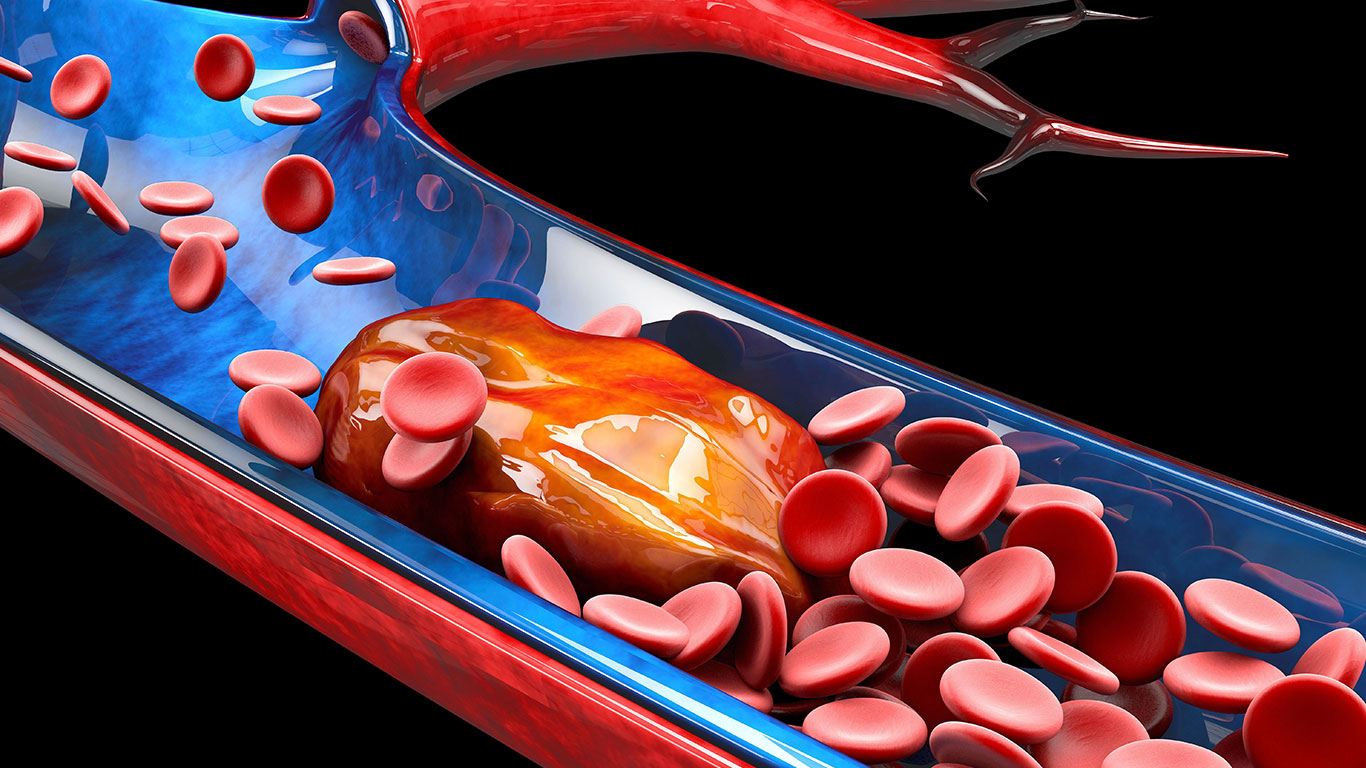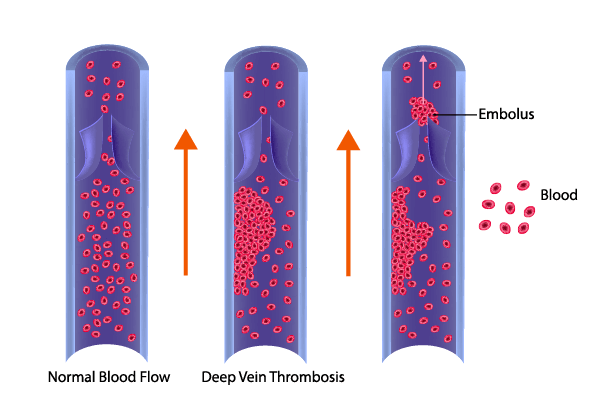Tips for DVT Prevention
- Category: Health & Wellness
- Posted On:
- Written By: LVMC

Deep vein thrombosis (DVT) can result in severe leg pain and swelling. Still, it may be entirely preventable by following these useful tips.
Deep vein thrombosis (DVT) is thought to affect more than 200,000 people in the United States and is the third most common cause of death from heart disease. DVT is primarily caused by vein damage during surgery or inflammation that occurs on behalf of an injury or infection. However, several other risk factors may increase your risk of developing DVT.
Knowing how to prevent DVT can help you stay healthy, improve your quality of life, and reduce your fatality risk from this condition.
Read on to learn about ways to prevent DVT and how Lompoc Valley Medical Center can help you effectively manage your heart health and other DVT risk factors.

Know Common DVT Risk Factors
Being aware of common DVT risk factors can give you insight into whether you should make certain healthy lifestyle changes or work with your doctor to reduce your risk. Anyone can develop DVT at any time; however, some risk factors make you more likely than others to get it.
Common risk factors for DVT include:
- Family history of DVT or pulmonary embolism
- Genetics and inherited disorders
- Being 60 years of age or older
- Sitting for long periods.
- Surgery or injury
- Being overweight or obese puts excess pressure on veins in the lower body.
- Pregnancy, due to excess pressure on veins in the legs and pelvis
- Bed rest, such as that which occurs during a long hospital stay
- Use of hormonal birth control or hormone replacement therapy
- Smoking
- Inflammatory bowel diseases, such as ulcerative colitis or Crohn’s disease
- Heart failure due to potential limited heart and lung function.
- Cancer and certain cancer treatments
If you meet one or more of the above risk factors, talk to your doctor about potential treatments for your condition or the unique steps you can take to reduce your risk for DVT further.
Stay Physically Active Throughout the Day
Sitting for long periods is a risk factor for DVT, as is being overweight — both of which can be addressed by exercising regularly and staying active throughout the day. Staying active prevents blood from pooling in your lower extremities and causing DVT.
If you work at a desk all day, stand up a few times per hour or go for walks during breaks inside or outside your workspace. If you are in bed recovering from an injury or illness, do leg lifts, ankle circles, or other exercises approved by your doctor. If traveling by car or by plane, take breaks every once in a while to stand up and walk around to promote blood flow.
Lose Excess Weight
Being overweight or obese represents a risk factor for DVT; therefore, losing excess weight can help you reduce your risk. Start exercising regularly and make a series of healthy changes to your diet. Reduce your intake of refined carbs, sugar, and fried foods, and eat a higher amount of whole foods, including fruits, vegetables, beans, nuts, and fish. Other steps you can take to lose excess weight include reducing stress and getting quality sleep.
If unable to lose excess weight with diet and exercise, meet with your doctor to determine whether you have any underlying health conditions that may be interfering with your ability to lose weight, such as hormone imbalances or a thyroid problem. In some instances, your doctor may recommend interventions such as weight-loss surgery or nutrition counseling that can help you lose excess pounds.
Quit Smoking
Smoking damages the lining of your blood vessels to increase the risk for blood clots and DVT. If you don’t smoke, don’t start, and if you do smoke, make it a priority to quit as soon as possible. Smoking doesn’t just increase your risk for DVT — it also increases your risk for heart disease, stroke, cancer, lung disease, diabetes, arthritis, and weakened immunity — among many other serious health conditions.
If you’ve tried quitting smoking in the past without success, ask your doctor about available smoking cessation treatments and interventions that can help. Nicotine replacement therapy (e.g., gums, patches, lozenges), medications, and behavioral therapies offer some of the many evidence-based treatments for tobacco cessation that can help you quit smoking.
Wear Compression Socks
Compression socks and stockings come with elastic that fits tightly around your legs and ankles to improve blood flow by pushing fluid up your legs back toward your heart. The excess pressure provided by compression socks can prevent blood from pooling and clotting in your legs.
Compression socks can be purchased from most drugstores and medical supply stores and are ideal for anyone who meets one or more risk factors for DVT. Please put on your compression socks first thing in the morning before you start moving and before your legs become swollen, as trying to put them on after you’ve been active can be difficult.
Drink Plenty of Water
Dehydration can cause your blood to thicken to increase the risk of a blood clot. Drink lots of water throughout the day and stay hydrated to prevent DVT. There’s no universal recommendation regarding the amount of water you should drink per day, as the amount will vary based on your environment and activity level. Drink water whenever you feel thirsty and during and after workouts.
Early signs of dehydration include headaches, difficulty concentrating, dizziness, fatigue, and constipation. If you experience one or more of these symptoms regularly, you may need to start drinking more water.
Wear Comfortable, Loose-Fitting Clothing
Pants, shorts, and shirts that fit tightly around your waist and/or legs can increase your DVT risk when worn for long periods. Start wearing more comfortable, loose-fitting clothing — especially if you plan on sitting or lying down for a long time or if you meet one or more risk factors for DVT. The exception to the rule remains compression socks and stockings — shown to help reduce your risk for DVT.
Manage Health Conditions That Put You at Risk
Obesity, inflammatory bowel disease, cancer, lung disease, and autoimmune diseases all increase your DVT risk. If you have any of these conditions, work closely with your doctor to manage them properly and prevent them from progressing or causing DVT. This may include taking prescribed medications correctly, starting an exercise routine, or seeing your doctor regularly for checkups.
Where To Go If You Need Treatment For DVT
Lompoc Valley Medical Center is home to many medical providers trained to assess, diagnose, and treat cardiovascular health conditions, including DVT. Visit our provider page to make an appointment with one of our primary care doctors or healthcare specialists.






